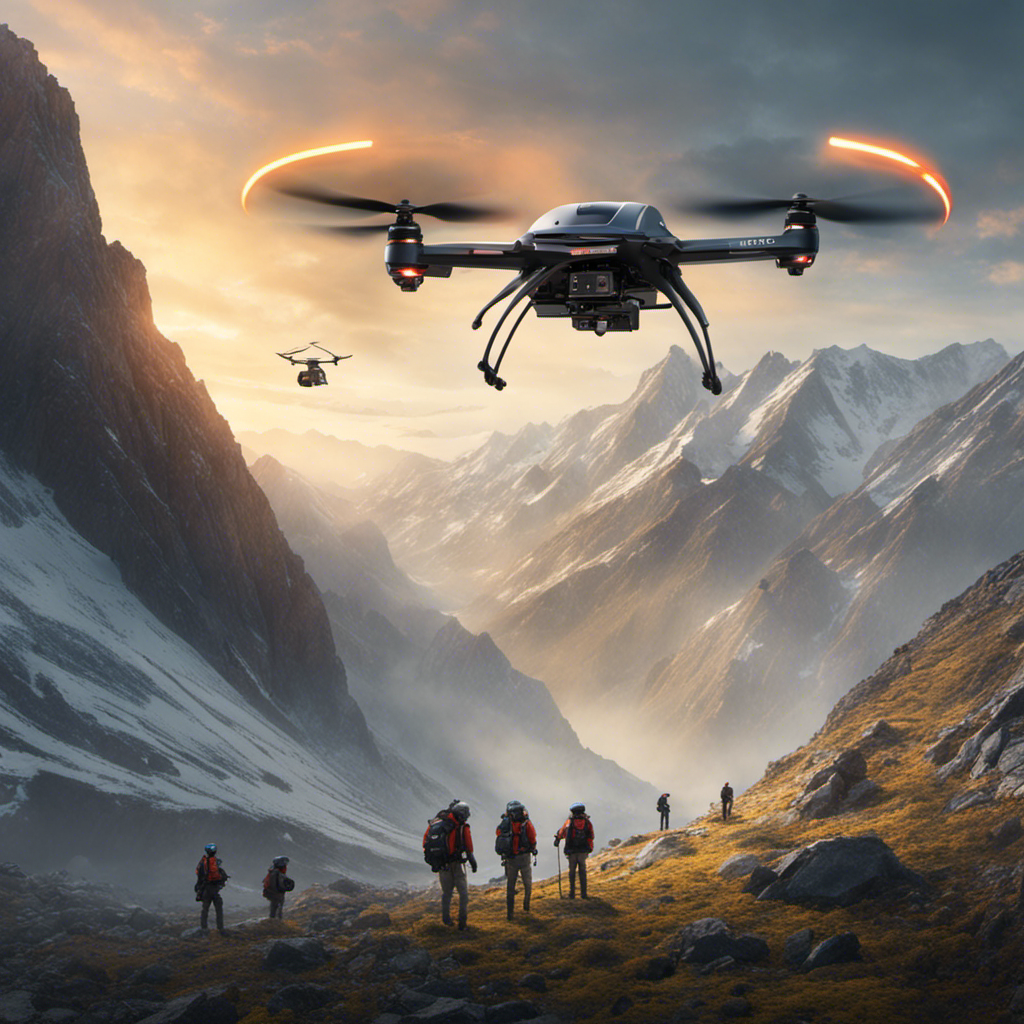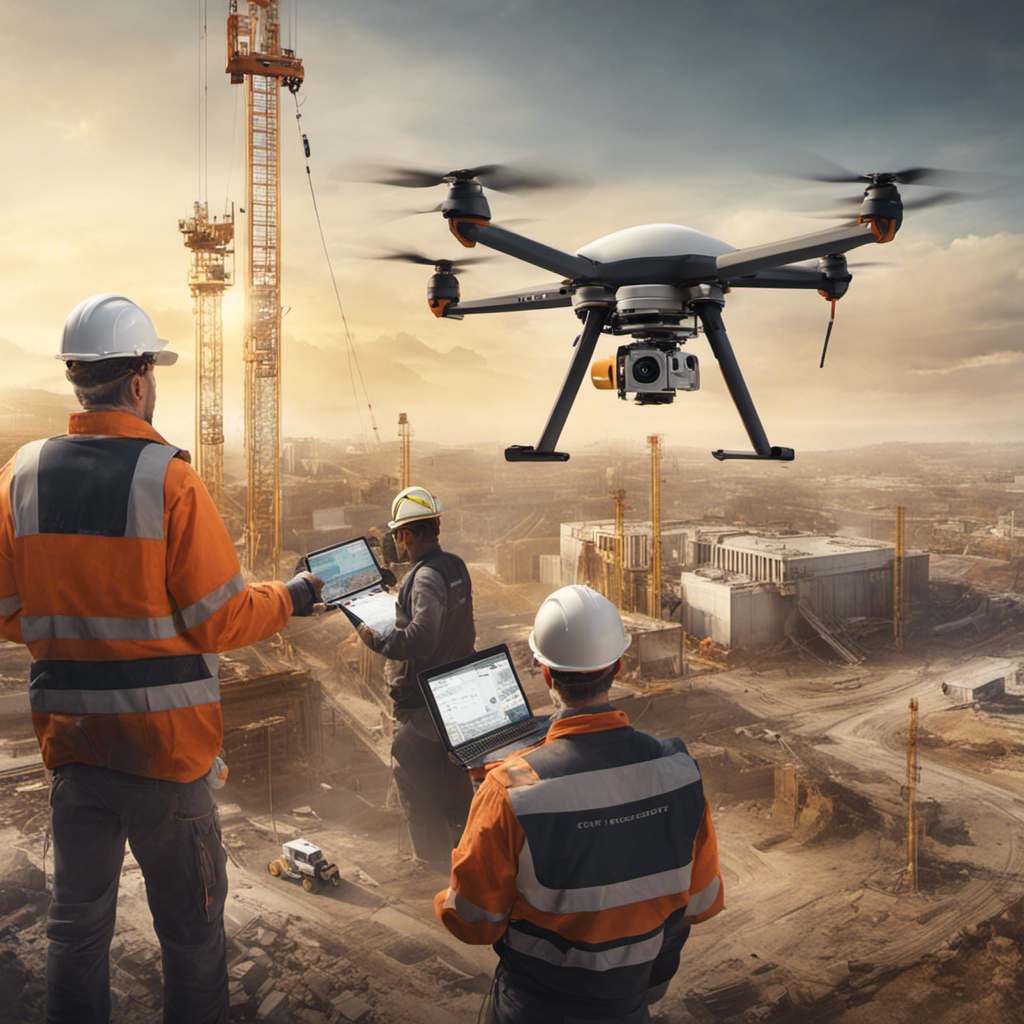Are you interested in how drones are revolutionizing search and rescue operations? Look no further! In this article, we will explore the incredible impact of drones on saving lives in critical situations.
Imagine drones finding missing individuals, delivering life-saving supplies, and assessing damages in disaster areas. These unmanned aerial vehicles have proven to be cost-effective, efficient, and capable of providing valuable aerial perspectives.
With advancements in technology, drones have the potential to drastically improve search and rescue operations and ultimately save more lives. So, buckle up and get ready to discover how these incredible machines are changing the game in search and rescue missions.
Key Takeaways
- Drones have revolutionized search and rescue operations by providing a faster and more efficient means of saving lives.
- The integration of thermal imaging technology in drones has been a game-changer, allowing them to detect heat signatures and identify survivors in challenging environments.
- Drones enhance the effectiveness of search and rescue missions by providing real-time visuals and data to rescuers, aiding in the efficient location of individuals in distress.
- The use of drones in search and rescue operations will only increase in the future, saving more lives and improving emergency response efforts.
The Evolution of Drone Technology
You can’t deny the significant advancements in drone technology over the years. The evolution of drone technology has transformed search and rescue operations, ultimately saving lives.
With the introduction of thermal imaging cameras and high-resolution video capabilities, drones have become an invaluable tool for rescue teams and emergency response teams. Drones provide an aerial perspective that was previously inaccessible, allowing rescue teams to quickly locate and assess the situation from above.
The use of thermal cameras on drones enables the detection of heat signatures, making it easier to locate individuals in need of help, even in challenging environments.
These advancements in drone technology have revolutionized search and rescue operations, providing a faster, more efficient means of saving lives.
Impact on Search and Rescue Operations
The impact of drone technology on search and rescue operations is undeniable, as it has revolutionized the way teams locate and save lives. Drones have become an invaluable tool in rescue missions, particularly in situations where time is of the essence and every second counts. With their aerial capabilities, drones can cover large areas quickly, providing a bird’s-eye view that’s crucial in locating missing individuals.
The integration of thermal imaging technology in drones has also been a game-changer in search and rescue operations. By detecting heat signatures, drones can identify survivors in disaster-stricken areas or dense forests, even in low-light conditions. This has significantly increased the efficiency and effectiveness of search and rescue efforts, ultimately saving more lives.
With their ability to access difficult terrain and provide real-time information to rescue teams, drones have truly become an essential asset in search and rescue operations.
Advantages of Drones in SAR Missions
One of the key advantages of drones in SAR missions is their ability to provide real-time visuals and data to rescuers. Drones equipped with thermal imaging can significantly enhance the effectiveness of search and rescue operations by detecting heat signatures and locating missing individuals in challenging terrains and harsh weather conditions.
With a bird’s eye view, drone pilots can map the search zone and provide situational awareness to public safety officials, aiding in the efficient location of individuals in distress. This real-time information allows for quicker decision-making and emergency response, ultimately saving lives.
Additionally, drones enhance the safety of rescuers by providing an aerial perspective and reducing the risk in dangerous areas. Law enforcement agencies are increasingly utilizing drones in search and rescue missions due to their cost-efficiency and ability to provide invaluable data and clear visuals.
Types of Drones Used in Search and Rescue
Fixed-wing, multi-rotor, and hybrid VTOL drones are the primary types used in search and rescue operations. Each type offers unique advantages that are essential for different missions.
Fixed-wing drones are perfect for expansive terrains and can cover large areas quickly due to their long flight times and high speeds.
Multi-rotor drones, on the other hand, provide exceptional maneuverability and precise positioning, making them ideal for navigating tight spaces or densely populated areas.
Hybrid VTOL drones combine the best of both worlds, allowing for vertical take-off and landing while also providing the efficiency of fixed-wing flight. These drones are often equipped with thermal imaging cameras, enabling SAR teams to detect heat signatures and locate missing persons during emergency response situations.
The Mavic 2 Enterprise is a popular option among law enforcement and SAR teams for its thermal imaging capabilities and compact size, making it suitable for operations in dense forests or natural disasters.
These drones play a crucial role in saving lives by assisting search and rescue teams in locating and providing aid to those in need.
Drone-Assisted SAR Techniques and Best Practices
Using thermal imaging capabilities, drones play a vital role in enhancing search and rescue operations by assisting in locating missing persons and providing aid. These drones have revolutionized the way emergency response teams conduct rescue missions.
Equipped with thermal cameras, drones can quickly locate individuals in hard-to-reach areas, such as cliffs, bodies of water, and disaster zones. By monitoring the heat signatures emitted by humans, these drones can pinpoint the exact location of survivors, even in challenging environments. This technology has proven particularly valuable for law enforcement agencies, allowing them to efficiently track and locate missing persons.
As the evolution of drone technology continues, their use in search and rescue operations will only increase, saving more lives and improving emergency response efforts.
Frequently Asked Questions
How Many Lives Have Been Saved by Drones?
Drones have saved countless lives with their advanced technology. With real-time surveillance, efficient search operations, and rapid response, they provide enhanced situational awareness and precise delivery of supplies, revolutionizing traditional search and rescue methods.
What Are the Benefits of Drones in Search and Rescue?
Drones offer efficiency advantages, enhanced visibility, remote accessibility, cost effectiveness, rapid response, improved search capabilities, real-time data collection, enhanced communication, versatility in terrain, and reducing risks for rescue personnel. They are invaluable in search and rescue operations.
How Do Drones Save People?
Drones save people by utilizing advanced technology, increasing search efficiency, providing real-time aerial surveillance, navigating difficult terrain, using thermal imaging to locate individuals, deploying in remote areas, collaborating with ground teams, and potentially using drone swarm technology in rescue missions.
How Are Drones Used in Emergency Rescue?
Drones play a crucial role in emergency rescue operations. With their advanced capabilities, they assist in disaster response, overcome challenges in remote areas, and provide valuable aerial footage. They also require proper training and integration with other resources.




